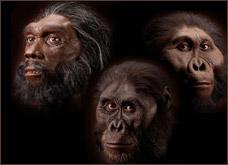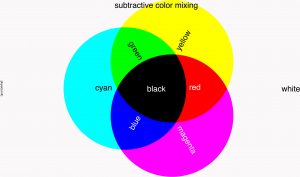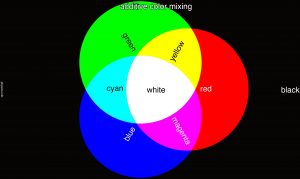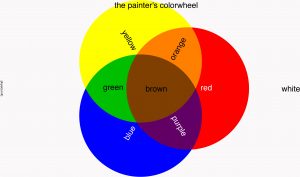Category: Knowledge

The Game of Life: Maria Konnikova on What She’s Learned From Poker
(excerpt)
The language we use becomes our mental habits – and our mental habits determine how we learn, how we grow, what we become. It’s not just a question of semantics: telling bad beat stories matters. Our thinking about luck has real consequences in terms of our emotional wellbeing, our decisions, and the way we implicitly view the world and our role in it. There is no such thing as objective reality. Every time we experience something, we interpret it for ourselves. How we phrase sentences can determine whether we have an internal or external locus of control, whether we are masters of our fates or peons of forces beyond us. Do we see ourselves as victims or victors? A victim: the cards went against me. Things are being done to me, things are happening around me, and I am neither to blame nor in control. A victor: I made the correct decision. Sure, the outcome didn’t go my way, but I thought correctly under pressure. And that’s the skill I can control.
The Formula: The Universal Laws of Success
1. Performance drives success, but when performance is immeasurable, networks determine success.
2. Performance is bounded, but success is unbounded.
3. Fitness x Previous Success = Future Success.
4. While team success requires diversity and balance, a single individual will receive credit for the group’s achievements.
5. Success can come at any time as long as we are persistent.
What it means to be human …

According to the Smithsonian National Museum of Natural History …
To what array of human ‘communities‘ do you choose to belong?
The way to eliminate Racism is to eliminate Racial categories.
– Teja Arboleda, MEd.
Amen.
To this point in human existence, many People have a limited understanding of Colour.
This includes understanding what Colour is and what Colour is not.
How many Colours are you able to see in each of these three diagrams?
In light of this experience, each of these other topics is important, as well:
Colour is a function of the human visual system.
Colour is not an intrinsic property.
Objects do not have a colour.
Objects give off visible light which appears to be a distinctive colour.
Within the spectrum of visible light Red, Blue, Green, Yellow, Orange, Purple (or Violet), Magenta, and Cyan all represent a distinctive colour.
Black, White, and Brown, also, each represent a distinctive colour.
Black is the absence of all visible light.
White is the presence of all visible light.
Brown is a combination of Red, Blue, and Yellow.
Colour is simply a perceived quality of visible light.
Culture is a function of the human social system.
Culture is not an intrinsic property.
Culture is not an object.
Culture does not give off visible light which appears to be a distinctive colour.
Culture is not Red, Blue, Green, Yellow, Orange, Purple (or Violet), Magenta, Cyan, Black, White, or Brown.
Culture encompasses social behavior and norms found in human societies, as well as the Language, knowledge, beliefs, arts, laws, customs, capabilities and habits of People in these groups.
Language is a social construct.
Language is not an intrinsic property.
Language is not an object.
Language does not give off visible light which appears to be a distinctive colour.
Language is not Red, Blue, Green, Yellow, Orange, Purple (or Violet), Magenta, Cyan, Black, White, or Brown.
Language is what People use to communicate.
People are a distinctive combination of individuals with a shared Culture.
People are not objects.
People do not give off visible light which appears to be a distinctive colour.
People are not Red, Blue, Green, Yellow, Orange, Purple (or Violet), Magenta, or Cyan.
People are not Black.
Black is not a Culture.
Black is not a Language.
Black is simply a distinctive colour.
People are not White.
White is not a Culture.
White is not a Language.
White is simply a distinctive colour.
People are not Brown.
Brown is not a Culture.
Brown is not a Language.
Brown is simply a distinctive colour.
People are not simple. People are complex.
People create culture with their language choices.
If you are going to use words like “black” and “white”, as racial terms, then, it should be the case that both words are capitalized, not just one or the other.
1) According to the Center for the Study of Social Policy …
Recognizing Race in Language: Why We Capitalize “Black” and “White”
(excerpt 1)
In addition to capitalizing Black, CSSP has also made the decision to capitalize White. We will do this when referring to people who are racialized as White in the United States, including those who identify with ethnicities and nationalities that can be traced back to Europe. To not name “White” as a race is, in fact, an anti-Black act which frames Whiteness as both neutral and the standard.
(excerpt 2)
For these reasons, we require the capitalization of “Black” and “White” when referring to racial identity in our work. Establishing a rule, instead of leaving capitalization to the writer as a choice, emphasizes the critical importance and political permanence of these words as real, existing racial identities. And instead of hoping for other White institutions to apply equitable treatment of capitalizing both “Black” and “White,” we’ve taken the step to establish our own style guide, and hope others will follow
– (
2) According to Kwame Anthony Appiah (Professor of philosophy and law at New York University) …
The vitality of language lies in its ability to limn the actual, imagined and possible lives of its speakers, readers, writers. Although its poise is sometimes in displacing experience it is not a substitute for it. It arcs toward the place where meaning may lie. When a President of the United States thought about the graveyard his country had become, and said, “The world will little note nor long remember what we say here. But it will never forget what they did here,” his simple words are exhilarating in their life-sustaining properties because they refused to encapsulate the reality of 600, 000 dead men in a cataclysmic race war. Refusing to monumentalize, disdaining the “final word,” the precise “summing up,” acknowledging their “poor power to add or detract,” his words signal deference to the uncapturability of the life it mourns. It is the deference that moves her, that recognition that language can never live up to life once and for all. Nor should it. Language can never “pin down” slavery, genocide, war. Nor should it yearn for the arrogance to be able to do so. Its force, its felicity is in its reach toward the ineffable.
Be it grand or slender, burrowing, blasting, or refusing to sanctify; whether it laughs out loud or is a cry without an alphabet, the choice word, the chosen silence, unmolested language surges toward knowledge, not its destruction.
Why WE are ALL African
“You old African, I’ve found You!”
– Alex Haley (James Earl Jones/Roots: The Next Generations, 1979)
There’s No Scientific Basis For Race – It’s a Made Up Label
(excerpt 1)
Over the past few decades, genetic research has revealed two deep truths about people. The first is that all humans are closely related—more closely related than all chimps, even though there are many more humans around today. Everyone has the same collection of genes, but with the exception of identical twins, everyone has slightly different versions of some of them. Studies of this genetic diversity have allowed scientists to reconstruct a kind of family tree of human populations. That has revealed the second deep truth: In a very real sense, all people alive today are Africans.
(excerpt 2)
“What the genetics shows is that mixture and displacement have happened again and again and that our pictures of past ‘racial structures’ are almost always wrong,” says David Reich, a Harvard University paleogeneticist whose new book on the subject is called Who We Are and How We Got Here. There are no fixed traits associated with specific geographic locations, Reich says, because as often as isolation has created differences among populations, migration and mixing have blurred or erased them.


